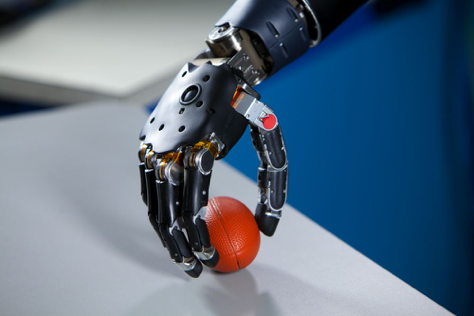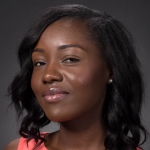“I can feel just about every finger—it’s a really weird sensation,” Mr. Copeland said a month after surgery. Mr. Copeland’s regained ability to feel again occurred after he was connected to the Brain Computer Interface (BCI) developed by researchers at the University of Pittsburgh and University of Pittsburgh Medical Center (UPMC).
Michael Copeland is a 28-year-old Pittsburg native who was involved in a tragic car accident in 2004 that snapped his neck and spinal cord and left him quadriplegic, paralyzed from his upper chest down. For the past decade, he had been unable to feel or move his lower arms and legs or perform any activities of daily living until he regained sensation with the BCI robotic arm.
The BCI is a technology that utilizes a robotic arm controlled by the patient’s brain to restore the sensation of touch. The research team members, led by Dr. Robert Gaunt, PhD, assistant professor of physical medicine and rehabilitation at the University of Pittsburgh, were elated by the results of this project. For this team, the most important result from this study was that “microsimulation of sensory cortex can elicit natural sensation instead of tingling.” The simulation delivered to the patient is safe, and induced sensations are maintained for months. Like every scientific discovery, more research is required to fully understand the simulation patterns and long-term effects of BCI. One of the impressive aspects of BCI is its ability to utilize the brain’s natural ability to “restore what is lost, but not forgotten” in patients like Mr. Copeland. So how exactly does BCI function?
 BCI utilizes a robotic arm developed by Johns Hopkins University Applied Physics Laboratory as well as a microelectrode array and its controlled system developed by Blackrock Microsystems. Inputs from the robotic arm are conducted to the microelectrode array implanted in patients’ brain centers responsible for hand movement and touch. For Mr. Copeland, imaging studies were performed prior to surgery to determine the exact location corresponding to feelings in each of his fingers and palm. Four microelectrodes—each about half the size of a shirt button—were placed by UPMC neurosurgeon Elizabeth Tyler-Kabara. This technology allows Mr. Copeland to tell most of his fingers apart, as he stated, “Sometimes it feels electrical and sometimes it’s pressure, but for the most part, I can tell most of the fingers with definite precision. It feels like my fingers are getting touched or pushed.”
BCI utilizes a robotic arm developed by Johns Hopkins University Applied Physics Laboratory as well as a microelectrode array and its controlled system developed by Blackrock Microsystems. Inputs from the robotic arm are conducted to the microelectrode array implanted in patients’ brain centers responsible for hand movement and touch. For Mr. Copeland, imaging studies were performed prior to surgery to determine the exact location corresponding to feelings in each of his fingers and palm. Four microelectrodes—each about half the size of a shirt button—were placed by UPMC neurosurgeon Elizabeth Tyler-Kabara. This technology allows Mr. Copeland to tell most of his fingers apart, as he stated, “Sometimes it feels electrical and sometimes it’s pressure, but for the most part, I can tell most of the fingers with definite precision. It feels like my fingers are getting touched or pushed.”
This isn’t the first BCI attempt for this research team. In 2012, they developed a BCI that helped Tim Hemmes, paralyzed from a motorcycle accident, and Jan Scheuermann, who has quadriplegia, perform different tasks with the robotic arm. The success of this previous study was the ability of the robotic arm to differentiate “a piece of cake and a soda can through touch” and to modify the amount of force used to carry each object. The new BCI created was an effort by this team to exploit a person’s sense of touch to direct their brain “where to move and by how much.”
Despite its success, there are limitations to the current BCI—it is unable to determine if a substance is hot or cold. The research team plans to expand on the findings of these studies: “The ultimate goal is to create a system which moves and feels just like a natural arm would.”
Agnes Ewongwo is a third-year medical student at The University of Arizona College of Medicine – Phoenix. She graduated with a Bachelor of Science in Physiology with minor in Africana studies and biochemistry from The University of Arizona, Tucson. Agnes is captivated by the complex realm of medical technology and passionate about the intersection of research, culture, policy, and humanism in the practice of medicine. She hopes to explore and merge these different areas throughout her medical training and beyond.


